Viral Vistas

Arizona’s Most Photogenic Natural Wonders
Writer Joseph J. Airdo
Arizona’s breathtaking landscapes make it one of the most photogenic places on Earth. From majestic mountains to sensational sunsets and statuesque saguaros, these 13 landmarks showcase our state’s most impressive natural pageantry, guaranteed to make your social media followers envious.
Forrest Gump Point
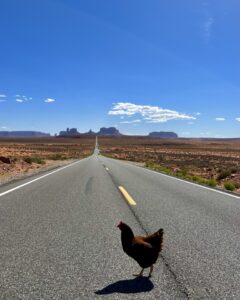


Located on Route 163 near mile marker 13 at the Arizona-Utah border, this iconic spot where Forrest Gump ended his cross-country run offers one of the most spectacular views of Monument Valley. With majestic crimson mesas and the unmistakable silhouettes of the East and West Mittens — those towering 1,000-foot buttes — framing the horizon, this instantly recognizable piece of cinematic history provides the quintessential American Southwest backdrop for your final Instagram masterpiece.
Spider Rock
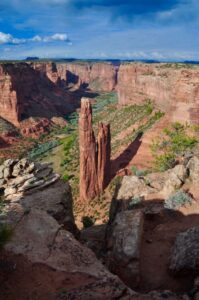


Soaring 750 feet above the floor of Canyon de Chelly, Spider Rock is a breathtaking sandstone spire revered as the home of Spider Woman, the mythical Navajo deity who taught her people the art of weaving. This iconic formation, viewed best from the South Rim overlook, stands sentinel over a landscape rich with ancient ruins and petroglyphs. Sunrise and sunset illuminate the spire in brilliant reds and golds, creating dramatic shadow play that makes for unforgettable images within this sacred Navajo landscape.
The Wave



The most exclusive landmark on our list, the Wave requires one of just 64 daily permits issued via lottery by the Bureau of Land Management. Located in the Coyote Buttes North area of the Utah-Arizona border, this mesmerizing sandstone formation requires a challenging 3-mile hike through unmarked desert. The reward: smooth, flowing shapes with striking red and yellow stripes that prove Mother Nature is the greatest artist of all. This 190-million-year-old geological wonder is widely considered the premier photographic destination in the American Southwest.
White Pocket
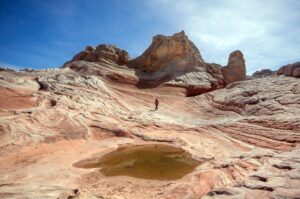


Hidden deep within Vermilion Cliffs National Monument, White Pocket is a surreal expanse of swirling white, red and orange sandstone that rivals the Wave for photographic drama — without the need for a coveted permit. Its brain-like rock formations, undulating ridges and vibrant colors create a dreamscape that feels almost otherworldly. Accessible only by high-clearance four-wheel-drive vehicles, this remote wonder rewards adventurous photographers with endless opportunities for creative compositions, especially during golden hour when the rocks glow with ethereal light.
Horseshoe Bend
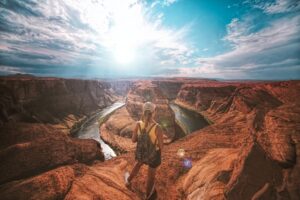


Just outside Page, the Colorado River makes a 270-degree, horseshoe-shaped bend around a sandstone escarpment, creating a 1,000-foot-deep canyon best photographed at sunrise or sunset. Despite drawing more than 2 million visitors annually, the easy 1.5-mile round-trip hike and tranquil turquoise waters flowing beneath vibrant canyon walls create a zen-like atmosphere perfect for capturing Arizona’s iconic beauty.
Antelope Canyon
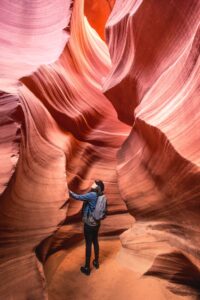


Located on Navajo Nation land near Page, this swirling sandstone slot canyon requires guided tours to visit. Plan for midday from March through October, when light shafts reach the canyon floor, illuminating the pink, red, orange and gold patterns on the canyon walls. Upper Antelope Canyon, shaped like an upside-down “V,” is more photogenic and popular, while Lower Antelope Canyon offers a more adventurous experience with narrow passageways and ladders.
Cape Royal
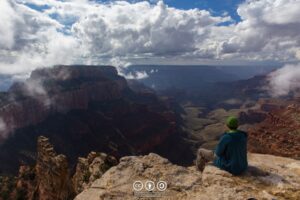


Offering the widest panorama of any Grand Canyon overlook, Cape Royal showcases stunning colors, deep gorges and towering buttes on the North Rim. The 7,721-foot Wotans Throne dominates the southwestern landscape, while nearby Angel’s Window — a picturesque arch that frames the Colorado River — provides endless photographic possibilities. The 23-mile drive to reach this spot offers additional worthy stops at Point Imperial, Vista Encantada, Roosevelt Point and Walhalla Overlook.
Yaki Point
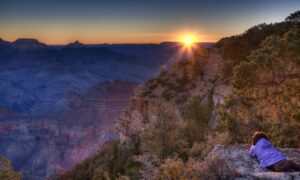


The ideal Grand Canyon South Rim overlook for sunrise or sunset, Yaki Point provides jaw-dropping views of the dramatic color changes across massive canyon formations. Accessible only via the free Grand Canyon South Rim shuttle bus or a scenic 12-mile round-trip mountain bike ride, this vantage point offers spectacular sidelighting of the canyon’s formations and distant North Rim.
Mooney Falls



The highest of Havasupai’s five spectacular waterfalls, Mooney Falls plunges nearly 200 feet into turquoise pools deep within the Grand Canyon. Reaching this magnificent backdrop requires a semi-technical downclimb using bolts, ladders and chains, adding exclusivity to your social media post. For more adventure, hike 3.5 miles downstream to secluded Beaver Falls or explore the more accessible Havasu Falls, whose vivid blue-green waters will make followers green with envy.
Old Fossil Creek Dam
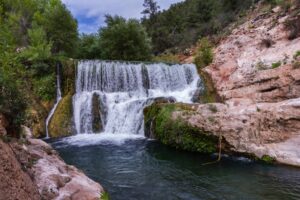


One of only two National Wild and Scenic rivers in Arizona, Fossil Creek requires a challenging 8-mile round-trip desert hike into a 1,500-foot-deep canyon. More than 30 million gallons of 70-degree water are discharged daily, creating travertine formations and the “Toilet Bowl” — a natural water slide that spins swimmers into the main pool. A hidden cave offers respite from the sun before tackling the strenuous return hike.
Devil’s Bridge
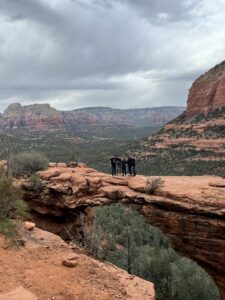


The largest natural sandstone arch in Sedona stands 54 feet tall and stretches 45 feet across, surrounded by stunning red rock vistas. Accessed via a relatively short 1.8-mile round-trip hike, this popular spot often requires waiting in line for that iconic shot of walking across the bridge. Take time to absorb the radiant landscape beyond your viewfinder.
Birthing Cave
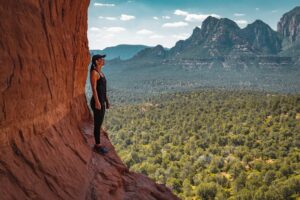


This lesser-known Sedona gem features a heart-shaped depression in the cliffs, accessible via a 2-mile round-trip hike from either Long Canyon or Mescal trailheads. At the wooden fence fork, turn left onto an unmarked, narrower trail. Carefully climb the smooth slickrock walls for one of Arizona’s most breathtaking views, framed within what could easily be mistaken for a production still from “Jurassic Park.”
Cathedral Rock
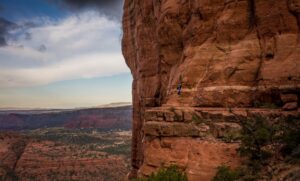


Arguably Sedona’s most iconic landmark, Cathedral Rock rises in majestic spires above the surrounding red rock landscape. The short but steep Cathedral Rock Trail leads to a saddle with sweeping vistas — especially magical at sunset when the sandstone glows with fiery hues. Whether you’re capturing its reflection in Oak Creek at Red Rock Crossing or framing a composition from the saddle viewpoint, this formation provides the quintessential Sedona image for your social portfolio.

